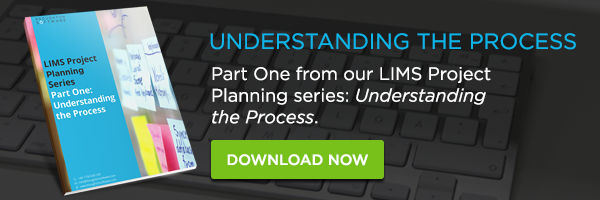Laboratory Managers are frequently overwhelmed with the amount of work they need to complete. Especially in a Quality Control laboratory, where turnaround times are crucial, routine operations continually takes priority, but what if these improvement projects provide substantial benefits to routine operations? In this blog, we share with you a few tips for balancing your workload.
Plan
Planning is fundamental to successful execution of any project, and to take that one step further, planning how each project will consume your schedule is the area that is most frequently forgotten. Project Management tools such as Gantt Charts are typically used, but be sure to calculate your time correctly. Most people often make the mistake of planning projects assuming they have the capacity to devote 100% of their time. Be realistic when considering how much time you can dedicate within your schedule, and don’t forget to add in holidays.
If you have more than one project running simultaneously, compare activity durations. For those who tend to breakdown their schedule daily, you can easily add the duration to ensure your 7.5-hour work day isn’t exceeded.
Another helpful trick is to account for distractions. It is unrealistic to think you will work solidly for 7.5 hours. You’ll take breaks, or have interruptions answering the phone or mentoring others if they stop in and ask you for your advice. As a general rule of thumb, we would say, in a day, you work to 80% capacity. Therefore a 7.5-hour work day drops to 6 hours.
Return on Investment
Completing a return on investment (ROI) exercise for each project will help you quantify the end benefit. Hopefully, this activity was completed prior to project approval, but if not, it’s never too late to start this exercise. An ROI usually involves calculating the current performance of the target process. Performance could be quantified in terms of defects, re-work, cost, time, satisfaction levels or all. Record these values.
The purpose of the improvement project is to implement a new process which in turn delivers performance improvements. Each project will have its own ROI, and the project with the best ROI values will be the project you want to complete first.
Prioritise
In addition to ROI, there may be additional factors that influence prioritisation which include resource availability such as people, knowledge and money. When you have a clear understanding of which factors take more weight than others, these factors can then be assessed – allowing you to effectively prioritise the time you spend on each project.
Under Promise
When planning has been effectively done by the Project Manager, it’s easy to under promise. The term under promise means to commit to less than what your capacity allows. This may sound counterintuitive, but under promising, in effect, accounts for contingency planning. Even when you use the greatest planning techniques known to mankind, there will always seem to be one or two aspects absent from schedule considerations. Adding time for contingency ensures that you effectively deliver to agreed deadlines, and your team, in return feels less overworked and more empowered.







